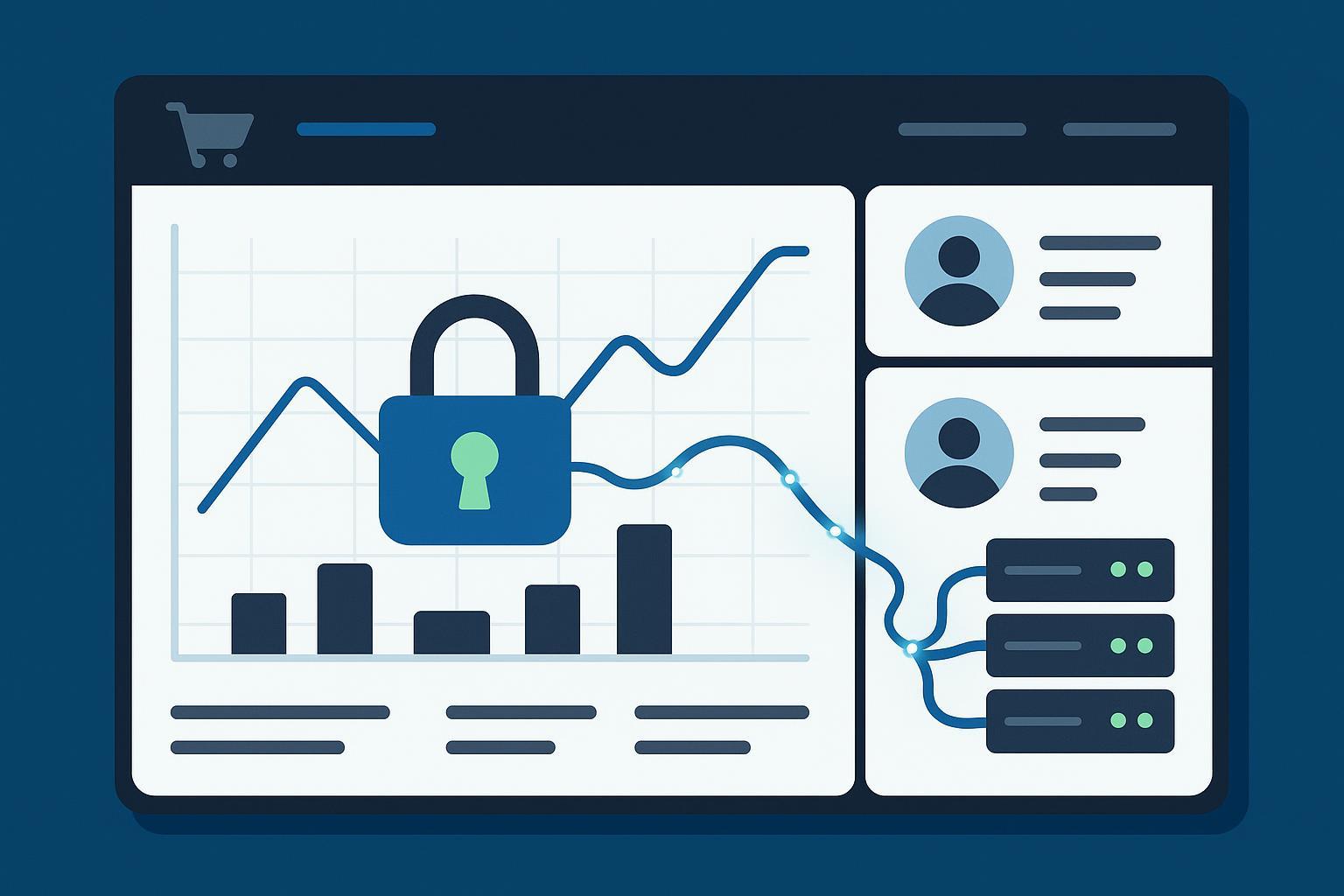Innovative Approaches to Retargeting Without Cookies: Embracing Privacy-First Strategies for E-commerce in 2025

Introduction: The Cookieless Tipping Point — Why Retargeting Must Evolve Now
If you’re relying on third-party cookies to drive e-commerce retargeting, 2025 is your last warning shot.
With every browser—from Chrome to Safari—obliterating third-party cookie support, and with privacy regulations like CCPA and CPRA ramping to full enforcement, brands must rebuild retargeting from the ground up. The good news: the marketers leading this change aren’t simply surviving—they’re delivering higher ROI, building customer trust, and architecting adaptable marketing stacks for the long haul.
In this guide, I’ll break down exactly how e-commerce teams can make this leap, drawing on proven practitioner workflows and the real-world impact of platforms like Attribuly.
1. The 2025 Retargeting Reset — What’s Changed and Why It Matters
Here’s a quick-hit rundown of the ground-shaking shifts affecting retargeting for e-commerce marketers:
- Third-party cookies have vanished: Chrome joined Safari and Firefox in 2024—retargeting pixels that don’t honor new consent rules won't work.
- CCPA/CPRA 2025 enforcement is real: U.S. e-commerce brands must now show auditable consent for any retargeting or campaigns touching California residents (SecurePrivacy, 2025).
- Platforms have evolved: Google, Meta, TikTok, and Shopify all emphasize server-side integrations, privacy-safe IDs, and stricter data partner scrutiny.
- Consumer expectations have flipped: 53% of U.S. shoppers (Statista, 2025) abandon or mistrust brands with opaque data usage or poor opt-out journeys.
Bottom line: The retargeting playbook is rewritten. Winning brands deploy privacy-first, consent-powered, and technically advanced strategies. Let’s break down what actually works now.
2. Playbook: Actionable Privacy-First Retargeting Methods for E-commerce (with Attribuly Insights)
A. First- and Zero-Party Data: Your New Foundation
What Works:
- Soliciting and activating data users expressly share (account signups, quizzes, loyalty programs, email/SMS opt-ins).
- Enriching profiles via interactions and feedback, triggered by recognizable value exchange.
E-commerce Practitioner Workflow:
- Setup account or loyalty incentives (exclusive discounts or cashback for profile completion).
- Deploy pop-ups, quizzes, and preference centers for zero-party data (think: “What styles/colors do you love?”).
- Automate personalized flows via email/SMS (cart/browse abandonment, replenishment suggestions).
- Leverage platforms like Attribuly:
- Aggregate zero- and first-party data across Shopify, email, and ad platforms.
- Use AI analytics to segment audiences by intent, purchase cycle, or LTV.
- Trigger server-side retargeting actions that don’t rely on browser cookies.
2025 ROI Snapshot: Brands with robust zero-party programs report up to 150% higher conversion rates on retargeting, with opt-in rates up 40% compared to old-school web pixel lists (Amra & Elma, 2025).
Trade-Offs & Pitfalls
- Requires sustained incentives—don’t let loyalty perks or quizzes go stale.
- You own the consent trail: CCPA/CPRA violations here are serious (see compliance below).
B. Contextual Targeting with AI Assistance
What Works:
- Serving ads based on the site/page category or topic the user is currently viewing.
- Using AI/ML to match products with page context and optimize placement in real-time (e.g., running shoes featured on top fitness blogs or YouTube channels covering marathons).
Step-by-Step for E-commerce:
- Identify high-performing content environments (Google Display, relevant editorial partners).
- Build AI-powered campaigns that scan and match ad inventory by keyword/category alignment.
- Activate placements dynamically—no user-level tracking required.
Attribuly Integration:
- Analyze campaign performance by channel/context.
- A/B test creatives matched to different site contexts.
- Attribute uplifts to contextual efforts using Attribuly’s multi-touch analytics across Google, Meta, and Shopify native channels.
2025 Data Point: Contextual retargeting now delivers average CTRs of 0.7% (10x standard display), with leading e-commerce brands reporting 25-40% incremental sales lifts for carefully matched product-content campaigns (Shopify, 2025).
Trade-Offs & Pitfalls:
- Less precise for deep personalization—habitual cart abandoners may not always be identifiable.
- Requires creative testing and ongoing content mapping.
C. Server-Side Tracking & Universal IDs
What Works:
- Moving from browser-based (client-side) pixels to server-side data collection for events like add-to-cart, purchase, or signup.
- Using hashed identifiers (like email or phone, only with consent) to reconcile actions across sessions and devices.
E-commerce Workflow:
- Configure server-side event tracking (GA4, Shopify, Facebook CAPI) to record user actions directly from your systems.
- Tie in consent logs—ensure no server-side data is stored or shared without CCPA-compliant opt-in.
- Implement universal ID frameworks (e.g., Unified ID 2.0, or Attribuly’s own identity resolution) to restore cross-channel view without cookies.
Attribuly Use Case:
- Attribuly’s server-side tracking (product details) is code-free for Shopify merchants and ensures all high-value actions map back to a privacy-respecting identity.
- Automatic data reconciliation across Google, Meta, TikTok, and Shopify for robust attribution.
2025 Performance Impact: E-commerce brands moving to server-side/ID-based workflows report up to 82% lower cost per conversion and ROAS boosts of 20%+ by unifying and activating first-party events without the risk of signal loss (RedTrack, 2025).
Pitfalls:
- Requires technical configuration and ongoing compliance audits.
- Some partners and platforms still lag on universal ID adoption—plan for “hybrid” workflows where needed.
D. Data Clean Rooms: Secure Cross-Channel Activation
What Works:
- Privacy-first data blending: Clean rooms allow secure, consented sharing and analysis of hashed customer data with platforms like Google, Meta, or major retail media—without exposing PII.
How E-commerce Brands Apply This:
- Define the audience segment (via Attribuly or CRM).
- Hash and upload customer lists—only after audit-trail consent is verified.
- Partners (Meta/Google/retailers) match these segments in a privacy-safe environment for measurement or campaign activation.
Attribuly Advantage:
- Unites multi-channel data, prepares segments for export, and tracks attribution outcomes post clean-room activation.
2025 Application Notes: Major brands using clean rooms report granular, multi-touch attribution and channel lift metrics that older pixel-based setups can’t achieve. Clean rooms, however, require resource investment and collaboration across departments.
Pitfalls:
- Complex to implement; best reserved for high-volume/mature teams.
- Compliance risk if audits or consents are incomplete—partner with legal/privacy specialists.
E. Predictive Modeling & AI-Driven Personalization
What Works:
- Machine learning identifies “next best audience” for retargeting—factoring purchase cycle, churn risk, or LTV.
- AI automates offer timing, messaging, and placement for peak conversion probability.
Workflow Example:
- Connect all owned data (web, Shopify, CRM, email, ad) to your analytics platform (Attribuly).
- AI segments and scores audiences based on real-time behaviors and declared interests.
- Activate personalized messaging sequences for high-probability segments (e.g., exclusive restock notice timed for likely buyers).
Attribuly Feature Example:
- AI-driven segmentation and triggered campaign builder automatically fire off retargeting (email/ad/SMS) to segments most likely to convert—fully privacy-compliant.
2025 Metric: E-commerce brands using predictive modeling strategies have reported conversion increases up to 250% and sharply reduced wasted spend compared to static retargeting (Unbounce, 2025).
Pitfalls:
- Strong data hygiene and consent logging required for legal and algorithm integrity.
- Models must be regularly retrained and checked for bias/compliance.
3. Compliance Quick-Guide: Zero-Risk Retargeting in a CCPA/CPRA World
Core CCPA/CPRA 2025 Requirements:
- Explicit, trackable consent for every identifiable or “linked” user.
- Consent Management Platform (CMP) for real-time and auditable opt-in/opt-out flow.
- Retargeting must not trigger (even server-side) if a user opts out.
- Annual privacy audit logs; clear data minimization and transparent privacy policy.
Checklist for Practitioners:
- Integrate a certified CMP—automate consent tracking at every touchpoint.
- Ensure all event and identity logs are mapped to user consent; test opt-out flows weekly.
- Limit retention and sharing of user data to only necessary, consented purposes.
- Train your team annually on privacy-by-design and current best practices.
Attribuly Compliance Enablement:
- All Attribuly data collection is permissions-driven and logs consent for both server- and client-side actions, mapped to event reporting and segment exports (learn more here).
4. Real-World Mini Case: Shopify DTC Brand Migrates from Cookies to Privacy-First Retargeting with Attribuly
Scenario: In late 2024, a mid-sized DTC apparel brand faced plummeting campaign performance as cookies vanished from Chrome. Their old pixel-based retargeting was now noncompliant, and performance tanked.
Solution Approach (Step-by-Step):
- Moved to server-side event tracking: Connected Shopify, Meta, and Google Ads to Attribuly with zero dev lift.
- Activated first- and zero-party data: Nudged all web visitors to sign up with incentives, deployed a style quiz, built a robust consent log.
- Segmented and scored audiences with Attribuly AI: Identified dormant email subscribers with high purchase intent signals.
- Triggered multi-channel personalized retargeting: Used Attribuly to coordinate SMS, email, and contextual ad flows—entirely privacy-first and compliant.
Results:
- Retargeting ROAS up by 19% within two months.
- Cost per conversion fell by 68%, with no regulatory risk thanks to auditable consent flows.
- POSITIVE customer reviews on transparency and privacy led to opt-in rates climbing an extra 27%.
5. Actionable Summary: What’s Working for E-commerce Retargeting in 2025
Quick-Reference Success Checklist:
- [ ] Build and activate first-/zero-party data programs (loyalty, quizzes, preference centers)
- [ ] Replace all client-side tracking with event-based, server-side workflows
- [ ] Invest in contextual campaigns—test and tune AI-optimized ad placements
- [ ] Implement universal ID and/or data clean room solutions as you scale
- [ ] Use AI for audience segmentation, intent scoring, and automated retargeting triggers
- [ ] Maintain CCPA/CPRA audit trails for all data collection and campaign activation
- [ ] Vet and train all vendors, staff, and partners for privacy-by-design compliance
Ready to Unify, Comply, and Win? Next Steps
Privacy-first retargeting isn’t just a compliance exercise—done right, it drives tangible performance gains, customer trust, and long-term marketing agility.
If you’re an e-commerce marketer ready to unify customer journeys, futureproof your analytics, and achieve best-in-class ROI, I highly recommend starting with Attribuly. Their platform is purpose-built for this new era—seamlessly handling server-side tracking, identity resolution, and privacy-grade segmentation across Shopify and all your critical ad channels.
Additional Authoritative Resources
- Sellbery—Digital Marketing Without Cookies: What's Working in 2025
- RedTrack—Cookieless Retargeting: Strategies to Boost Your Ad Performance
- Didomi—Server-Side Tracking & Consent Management
- Usercentrics—Server-Side Tagging Impact
Written by an e-commerce analytics technologist with deep experience in privacy-first, multi-channel retargeting. All best practices are field-tested and aligned with 2025 U.S. privacy standards.
